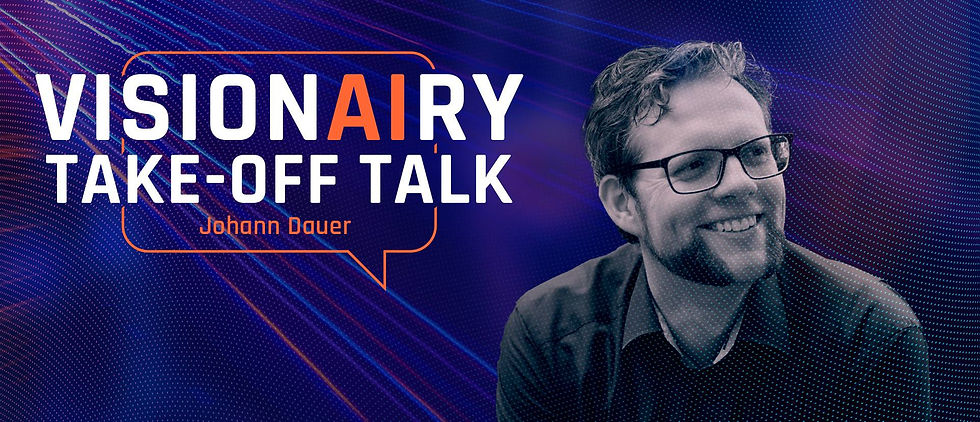VISIONAIRY® Expert Talk with Michael Fischer, Spleenlab GmbH
- janhartmann6
- Apr 26, 2023
- 3 min read
T

Today we talk to Michael Fischer, an expert in image processing and self-supervised learning, about his involvement in the development of a breakthrough technology – monocular depth estimation:
1) What is your academic career like? What did you do before Spleenlab?
My academic career includes a Master’s degree in Engineering Computer Science from TU Ilmenau with specialization in Cognitive Systems and Robotics. Before joining Spleenlab, I worked at Easterngraphics where I was involved in image classification, search engine development, backend and frontend development, and synthetic data generation.
2) How did you come to Spleenlab GmbH? What is your area of responsibility?
The opportunity to work on exciting projects in the field of autonomous mobility while contributing to the development of innovative solutions has been a great incentive for me. In addition, working in a startup also offers the chance to take on responsibility and develop quickly. It’s exciting to be part of a company that has its finger on the pulse and is constantly taking on new challenges. Currently, I am focusing on self-supervised monocular depth estimation. This is a technique where depth is calculated from a monocular camera without the need for external reference data. This is done by training the algorithm on large data sets of video sequences, which allows it to learn to estimate depth from purely visual information. This also allows precise depth detection to be realized in a cost-effective manner.
3) Where do you see concrete applications in the automotive sector based on this technology?
I see concrete applications in the following automotive areas:
Calibration of extrinsic camera parameters: This is an important aspect for precise monitoring and control of autonomous vehicles.
Scene understanding and collision avoidance: Monookular depth estimation can be used to improve a vehicle’s scene understanding and avoid potential collisions.
Navigation support: the technology can be used to improve the navigation of autonomous vehicles and ensure that they move along the best route.
Road traffic monitoring: the technology can be used to better monitor road traffic and ensure that autonomous driving vehicles act safely.
The monocular depth estimation we are developing at Spleenlab has the potential to replace expensive lidar systems in certain applications. This is especially the case when a high-precision depth map is not essential or when cost is an important factor. Because monocular depth estimation uses a simple camera, it is more cost-effective than lidar systems, which often require multiple laser sensors. In addition, monocular depth estimation can be used in environments where lidar does not work optimally, such as in high light conditions or fog. Overall, the technology we are developing at Spleenlab offers a wealth of opportunities to improve the automotive sector and make it safer.
4) How advanced is the development of the AI software?
The monocular depth estimation technique we are developing here at Spleenlab has already made significant progress. As of today, we can generate accurate depth images from video sequences using calibrated cameras. Our system is trained on different datasets from millions of images to produce the best possible results.
5) What all will be possible with monocular depth estimation in the future?
With monocular depth estimation technology, we can expect more interesting applications in the future. Here are some examples:
Calibration of the cameras at training time: Until now, it has been necessary for the cameras to be calibrated before deployment. In the future, it might be possible that the cameras are already calibrated during the training time, which facilitates the deployment.
Algorithm generalizes better over unknown scenes: A variety of training data will allow the algorithm to better generalize over unknown scenes in the future, providing better results
Advances in moving object detection to provide even more accurate depth estimates
These are just a few examples of what can be expected in the future with monocular depth estimation. There will certainly be other interesting applications made possible by advances in technology.


